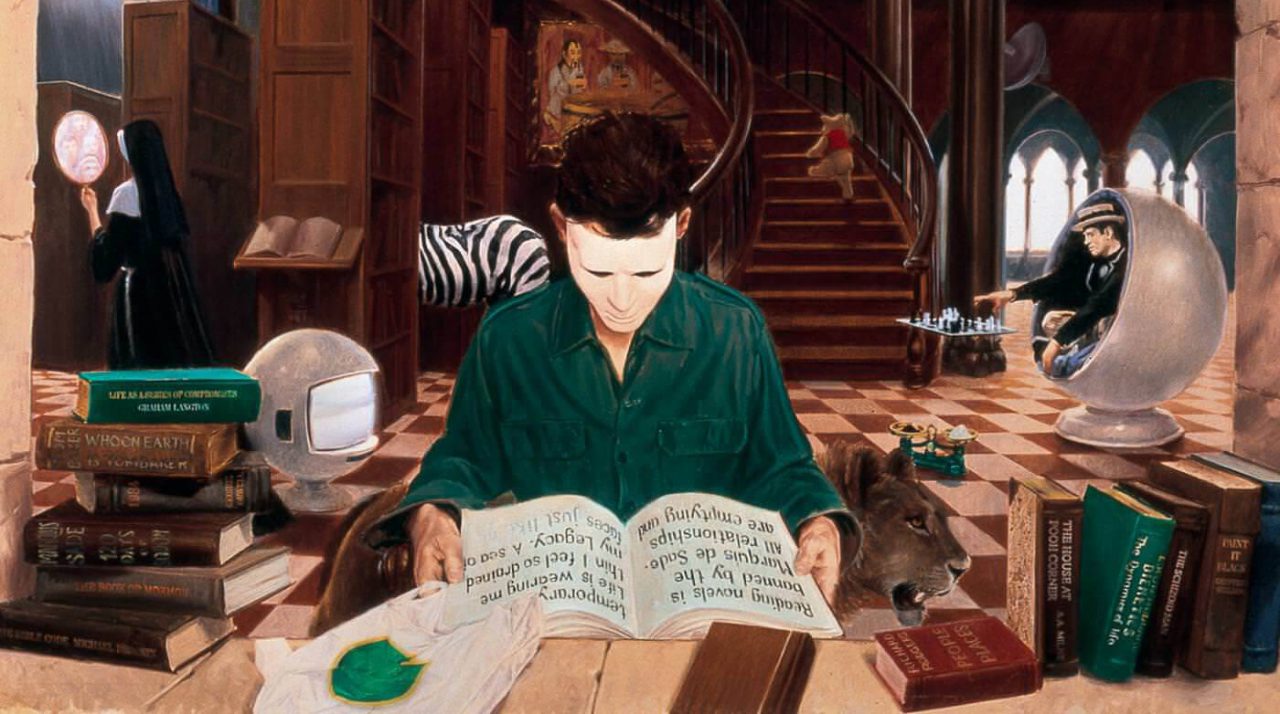Though the autobiographical Junky and Queer were written before it (and Junky was published substantially prior to it and made a small splash), there’s no question that Naked Lunch and the Nova Trilogy were the works which made William Burroughs truly infamous, particularly since they involved the debut of his bizarre form of prose surrealism. Likewise, though he’d put out a few pieces after it, a case can be made that the Red Night Trilogy is Burroughs’ final work of significant substance. Released over the course of the 1980s, as the HIV epidemic impacted multiple subcultures that Burroughs had long had a foot in (most particularly the gay community and the world of intravenous drug users), it’s not really about AIDS (even though a plague is featured in Cities of the Red Night) so much as it’s setting a capstone on his experimental fiction.
As much progress had been made in the intervening decades, society was still relentlessly unsympathetic towards drug users and homosexuals alike (let alone homosexual drug users); Burroughs, for his part, remained unwilling to compromise. Merely rehashing the tools and techniques developed in his glory days would just be going over old ground; for this last charge, Burroughs changed his angle of attack, bringing back more stretches of comparatively straightforward and intelligible narrative whilst reserving his more bizarre tools for when they would be most effective.
Cities of the Red Night

Burroughs introduces this opening novel of the trilogy by explaining his inspiration: reading about the pirate republics of the 17th and 18th Centuries, particularly the “Libertatia” colony supposedly founded by Captain Mission (though this one may be apocryphal), as examples of communities working on a voluntarist philosophy in stark contrast to the hierarchical societies of the time.
This prompts Burroughs to speculate as to what could have been had the pirate republics made common cause with the colonised peoples in the regions they established themselves (rather than acting as, in effect, unlicensed colonisers) as well as each other, so as to provide a disparate source of resistance against the authoritarian powers of the time. Burroughs posits that the US defeat in Vietnam indicates that the empires of the age would not have been able to root out such an insurgency any more than the US was able to defeat the Viet Cong – especially when by Burroughs’ estimate the technological gap between the pirate republics and the Spanish or British would have been significantly less than that between the US and the Vietnamese insurgents.
What unfolds after this statement of intent is, in its own way, just as bizarre as anything from the Nova Trilogy, but the methodology taken is rather different. Burroughs’ arsenal of occult obsessions (improvised chaos magic proliferates), sexual fetishes (boners and jizz everywhere), and surreal/morbid imagery (many, many nooses and hangings) is still very much in place, but this time he doesn’t turn all the dials up to 11 and deploy everything at once.
Continue reading “Burroughs’ Nightmare Geography”






 The news of a third season of Twin Peaks, coming 25 years or so after we last visited it via the weird hybrid prequel-sequel movie Fire Walk With Me, felt both like a glorious opportunity and an enormous creative risk. Not only had plot elements from the original’s ending suggested that a comeback in 25 years might be possible, but also the spectre of network interference that was widely held to have scuppered the original was banished. Written solely by creative leads Mark Frost and David Lynch, and directed from start to end by David Lynch, the whole prospect gave the series creators far more control than they ever had (or could have dreamed of receiving) during the show’s original run. Early on in the production process there was a risk that Lynch would walk away due to not being given the budget to tell the story he wanted; Showtime buckled, gave him a free hand, and later took pride in promising viewers the “pure heroin David Lynch”. That in itself is testimony of how
The news of a third season of Twin Peaks, coming 25 years or so after we last visited it via the weird hybrid prequel-sequel movie Fire Walk With Me, felt both like a glorious opportunity and an enormous creative risk. Not only had plot elements from the original’s ending suggested that a comeback in 25 years might be possible, but also the spectre of network interference that was widely held to have scuppered the original was banished. Written solely by creative leads Mark Frost and David Lynch, and directed from start to end by David Lynch, the whole prospect gave the series creators far more control than they ever had (or could have dreamed of receiving) during the show’s original run. Early on in the production process there was a risk that Lynch would walk away due to not being given the budget to tell the story he wanted; Showtime buckled, gave him a free hand, and later took pride in promising viewers the “pure heroin David Lynch”. That in itself is testimony of how